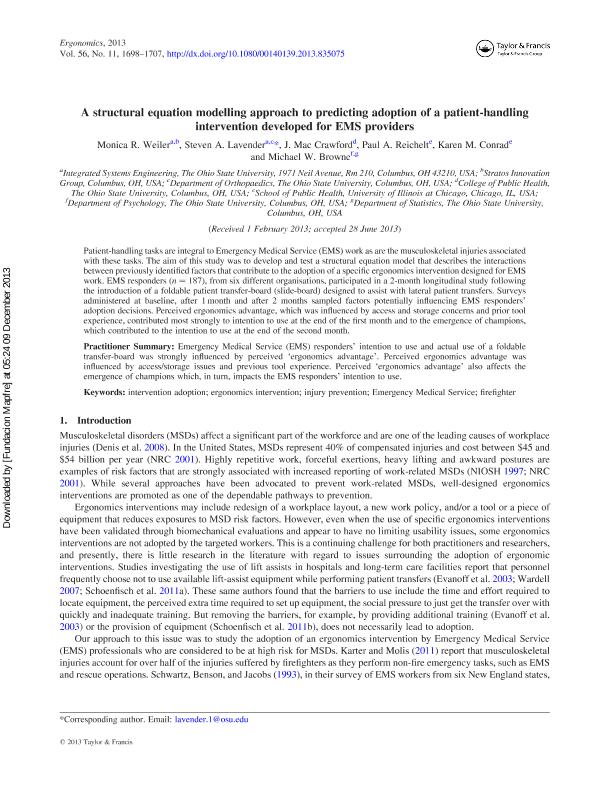A Structural equation modelling approach to predicting adoption of a patient-handling intervention developed for EMS providers

Contenido multimedia no disponible por derechos de autor o por acceso restringido. Contacte con la institución para más información.
| Tag | 1 | 2 | Valor |
|---|---|---|---|
| LDR | 00000cab a2200000 4500 | ||
| 001 | MAP20130041278 | ||
| 003 | MAP | ||
| 005 | 20131210102158.0 | ||
| 008 | 131209e20131104esp|||p |0|||b|spa d | ||
| 040 | $aMAP$bspa$dMAP | ||
| 084 | $a875 | ||
| 245 | 0 | 3 | $aA Structural equation modelling approach to predicting adoption of a patient-handling intervention developed for EMS providers$cMonica R. Weiler |
| 520 | $aPatient-handling tasks are integral to Emergency Medical Service (EMS) work as are the musculoskeletal injuries associated with these tasks. The aim of this study was to develop and test a structural equation model that describes the interactions between previously identified factors that contribute to the adoption of a specific ergonomics intervention designed for EMS work. EMS responders (n = 187), from six different organisations, participated in a 2-month longitudinal study following the introduction of a foldable patient transfer-board (slide-board) designed to assist with lateral patient transfers. Surveys administered at baseline, after 1 month and after 2 months sampled factors potentially influencing EMS responders' adoption decisions. Perceived ergonomics advantage, which was influenced by access and storage concerns and prior tool experience, contributed most strongly to intention to use at the end of the first month and to the emergence of champions, which contributed to the intention to use at the end of the second month. | ||
| 773 | 0 | $wMAP20100019818$tErgonomics : the international journal of research and practice in human factors and ergonomics$dOxon [United Kingdom] : Taylor & Francis, 2010-$x0014-0139$g04/11/2013 Volumen 56 Número 11 - noviembre 2013 |

